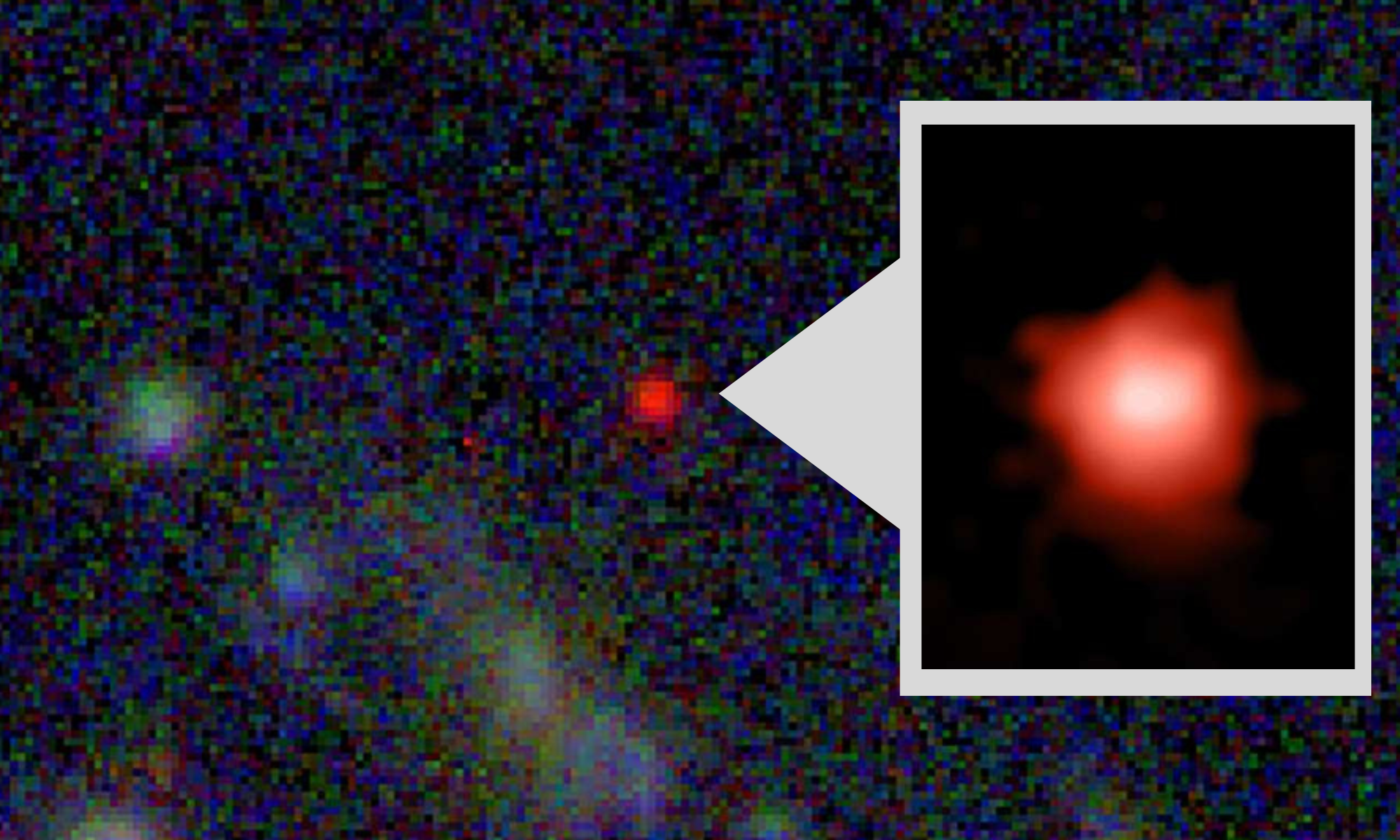The galaxy GLASS-z13 existed when the Universe was just 300 million years old.

Image Credit: Niels Bohr Institute, University of Copenhagen T. Treu (UCLA) and GLASS-JWST. NASACSAESASTScI
Just a week after the first images from the James Webb Space Telescope (JWST) were realized, the instrument appears to have captured light from the oldest galaxy ever observed.
The galaxy designated GLASS-z13 existed 13.5 billion years ago when the Universe was just 300 million years old. As such, it is around 100 million years older than any other galaxy previously spotted.
Because light takes a finite time to travel this also makes this galaxy the most distant astronomers have ever spotted.
Though it's clear this galaxy existed in the earliest epoch of the Universe, researchers can’t yet pinpoint the exact age of GLASS-z13. The galaxy could have formed at any point in the 300 million years following the Big Bang.
GLASS-z13 became visible when data from the JWST’s main infrared imager — NIRcam — was translated from infrared to visible light. The early galaxy appears as a red ‘blob’ with a central white spot.
The work was conducted by a global team of 25 astronomers including Harvard Center for Astrophysics researcher Rohan Naidu.
The team’s discovery has appeared in a paper published on the preprint server ArXiv¹. Though it is yet to be peer-reviewed, the findings have excited the astronomy community and seem to be confirmation of the space telescope's ability to see deeper in the Universe, and thus through time, than any instrument that has preceded it.
How Does the James Webb Space Telescope Stare Back in Time?
The advantage that the JWST has over other instruments like Hubble in staring back in time is because it is specially equipped to see the Universe in infrared. The reason this is important is because of a phenomenon in astronomy called ‘redshift.’
Redshift is similar to the Doppler effect here on Earth that may be familiar to you as the change in sound that happens as a vehicle with a siren passes you.
As the vehicle approaches, the sound waves are bunched up in front of it, the wavelength is shorter, and the frequency is greater. As the vehicle passes and moves away, the soundwaves are stretched out with the wavelength growing longer and the frequency reducing.
The same happens with astronomical sources, but with light rather than sound. So, if a star, galaxy, or another astronomical source of light, is moving toward Earth, the frequency is increased and the wavelength shortened. This means its light is shifted towards the blue end of the electromagnetic spectrum.
When these sources are moving away the opposite happens: the wavelength is stretched, the frequency reduced, and the light is ‘shifted’ towards the red end of the spectrum.
This effect is kicked into overdrive for extremely old sources where light has been traveling for billions of years. This is caused by the accelerating expansion of the Universe and is also known as ‘cosmological redshift.’
For galaxies that existed in the early Universe like GLASS-z13, where light has traveled 13.5 billion years to reach us, the frequency of the light and its wavelength has been traveling long enough to be kicked down into the infrared portion of the electromagnetic spectrum.
This means spotting it takes an extremely powerful infrared telescope; a telescope just like the JWST.
Astronomers believe this to be the oldest galaxy we’ve ever spotted because it has the highest redshift on record, at around z = 13.
Astronomy’s Records Begin to Crumble
The age of GLASS-z13 coincides with the results of another team of astronomers. Additionally, astronomers have also discovered another ancient galaxy — GLASS-z11 — in JWST NIRcam data, though this isn’t quite as old as GLASS-z13.
The discovery of this early galaxy has left questions regarding its formation that now need to be answered. The galaxy has a mass equivalent to a billion suns and researchers aren’t yet sure how it grew so massive just 300 million years after the Big Bang.
To answer this question, and to determine a more precise distance from Earth for GLASS-z13, Naidu and the team will be seeking further telescope time with the JWST.
They aim to use this time to perform spectroscopy on the galaxy, a procedure that looks for the tell-tale and individualistic absorption of light by specific elements.
As spectroscopy gives a fingerprint for these elements and compounds containing them, it could help the astronomers determine the chemical composition of the galaxy as well as other characteristics.
The JWST was launched on Christmas Day 2021 and only began science operations in early July. A Tweet from NASA chief scientist Thomas Zurbuchen in response to the discovery of GLASS-z13 illustrates the JWST's impact already.
Zurbuchen wrote: “Astronomy records are crumbling already, and more are shaky.”
More from AZoQuantum: James Webb Space Telescope: The Images So Far
Sources
¹ Naidu. R., Oesch. P. A., van Dokkum. P., et al, [2022], ‘Two Remarkably Luminous Galaxy Candidates at z ≈ 11 − 13 Revealed by JWST,’ [https://arxiv.org/pdf/2207.09434.pdf]
Disclaimer: The views expressed here are those of the author expressed in their private capacity and do not necessarily represent the views of AZoM.com Limited T/A AZoNetwork the owner and operator of this website. This disclaimer forms part of the Terms and conditions of use of this website.